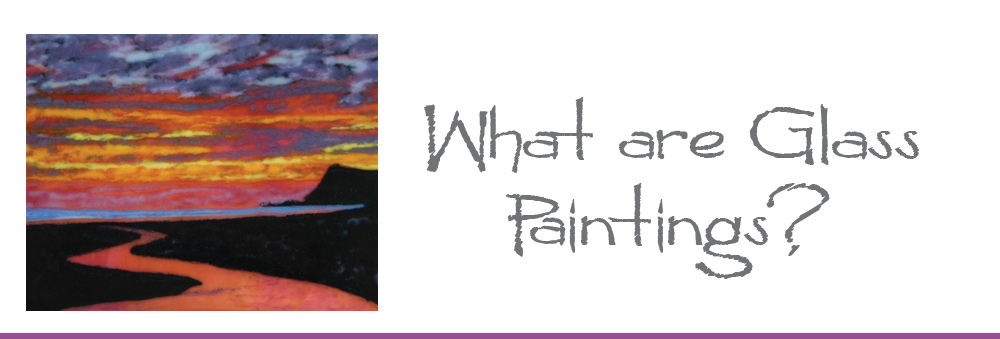The Challenges
One of the challenges with kiln fused glass is that the various colors of the glass itself must be originally manufactured to all have the same coefficient of expansion. Otherwise when fused together, they will be brittle and crack because they expanded with the firing heat at different temperatures. This special manufacturing process is available from only a few glass companies, and it all means that the glass product the fused glass artist uses is much costlier than window glass.
There are also challenges on the artist’s time for creation. Not all colors I might want to use in a glass painting are readily available in the palette of colors that my glass manufacturer produces. When planning a glass piece, significant time can be spent in creating and firing samples of various other colors that I want to incorporate into the piece. Because of the reactivity of chemical compositions of some colors with others, colors cannot always simply be achieved by mixing, as with oil paints.
Colors that can react to each other must be separated by a clear layer, so they do not turn brown with their reaction. Layered colors like this have a different appearance from mixed colors, so some desired colors remain quite difficult to achieve. There is an additional time factor to always assuring this separation, too, with constant application of clear between reactive colors as the artist progresses in the creation of the image across the glass.
The pre-fired colors of the frit are not true to their post-firing colors, either, (a number are just white, as is the clear frit for separating reactive colors) so a mental image must be kept of the intended composition at all times while applying the frit. The design does not appear at all as it will once kiln-fired. The thickness of the frit, which can only be estimated while applying, also determines the depth of its color. Most landscapes require multiple firings with multiple applications of frit or multiple layers in order to achieve the appearance of depth and the colors desired.
I frequently use a more impressionistic technique that involves piling on the frit a bit irregularly, which produces a glass surface of irregular thickness. If the glass is quite thick, or just as importantly, if it is of variable thickness, each firing can require a couple of days of slow incremental changes in the kiln temperature to complete. A slower firing schedule prevents the glass from cracking as it heats and cools. Thick glass, or glass of different thicknesses, allows parts of it to heat or cool at different rates and, therefore, will break (thermal shock) if the temperature of the kiln is not changed quite slowly. During this firing time, the kiln cannot be opened to have anything added or removed.
In contrast to painting, frit artists cannot see if they are achieving their desired effect as they work, but only after their frit application and kiln firing are completed (which can be days worth of work). As the frit melt with firing, they retract to often leave spaces between colors or appear less dense in color than desired and the composition must be achieved by the application of additional frit with additional firing.
